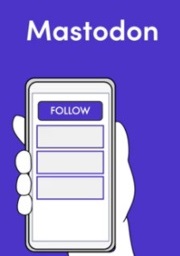The Dangerous Connections Between Social Media and Eating Disorders
Social media has a powerful influence on how kids and teens view themselves and the world. Many children fall into the trap of comparing themselves to the influencers they see online. For some, that comparison can make them self conscious about their body and diet, often causing or aggravating disordered eating habits.
As a parent, you should be aware of these risks. Here are the dangerous connections between social media and eating disorders.
What are Eating Disorders?
Eating disorders are serious mental health conditions that cause severe disturbances in eating behaviors. The consequences can cause issues in your emotional and physical health. Eating disorders typically accompany negative body image or distorted perception of weight and shape.
Anyone can be affected by eating disorders — one study found that about 52% of girls and 45% of boys skip meals and engage in behaviors associated with eating disorders. Meanwhile, about 75% of girls and 70% of boys had at least one social media.
Social media can contribute to the development of eating disorders in several ways. Children and teens are of particular concern since the world around them heavily influences their development and choices.
The Influence of Social Media
Apps like TikTok, Instagram and Snapchat have made it easier for people to compare themselves to others, often leading to a negative self-image. When your kids are constantly exposed to images of people that appear to have perfect bodies, it can harm how they feel about themselves. The photos they see are likely edited and filtered to create the look they put out there, setting unrealistic standards.
These altered images of reality can cause children to compare themselves and feel pressured to conform. Things get even worse when content creators promote unhealthy habits or lie about how they got the body they did.
Creators can promote unhealthy diets like fasting or drinks that encourage weight loss. These ads are dangerous to children vulnerable to developing eating disorders. Algorithms will note the content your kids engage with and give them more pictures and videos of the same style, creating more damage.
What You Can Do
Taking action to protect your children’s mental health and prevent them from being bombarded with harmful content is important. As a parent, you play a crucial role in helping your children navigate the world. You can teach your children tips on staying away from harmful trends and being aware of how social media influences them.
These are some ways to take action:
Explain the importance of food
A diet full of whole foods is the best way to have a healthy body. Eating foods that nourish you help your skin and overall body stay as healthy as possible. Tell them how food fuels your body and remind them of the amazing things it does daily. You can make sure they have healthy options at home, like fruits, vegetables, whole grains and lean meats.
Be a role model
Your kids learn by example so it is important to model healthy behaviors you want them to have. Avoid negative self-talk about your own or others’ bodies. Kids will internalize the way you talk about weight, food and body image, so be cautious about what you say around them.
Set social media boundaries
Limit their amount of social media use per day. It can reduce how much they’re exposed to harmful trends and messages. Encourage your kids to unfollow pages that make them feel bad about themselves or promote false claims about their bodies. Also, suggest doing other things such as getting outside or doing other hobbies.
Talk openly
Allow your children to feel safe when talking about what they see on social media. Be non-judgemental and validate their feelings and concerns. Sometimes you might need to give them a reality check by reminding them what they see online isn’t always true.
Emphasize self-care
Remind your children to take care of themselves in all aspects. In addition to their physical well-being, it also includes being mindful of their mental and emotional state. Teach them self-care habits like journaling and taking time to relax. As an adult, you might not realize how much stress kids and teenagers are under these days.
The Bottom Line
Social media can greatly affect your children’s body image and play a role in developing eating disorders. Work together with your children to learn how to have a healthy relationship with their bodies and prevent social media from influencing them.
 Author bio: Cora Gold is the Editor-in-Chief of women’s lifestyle magazine, Revivalist. She strives to live a happy and healthy life with her family by her side.
Author bio: Cora Gold is the Editor-in-Chief of women’s lifestyle magazine, Revivalist. She strives to live a happy and healthy life with her family by her side.
Follow Cora on Facebook and LinkedIn.




 Author bio:
Author bio:




